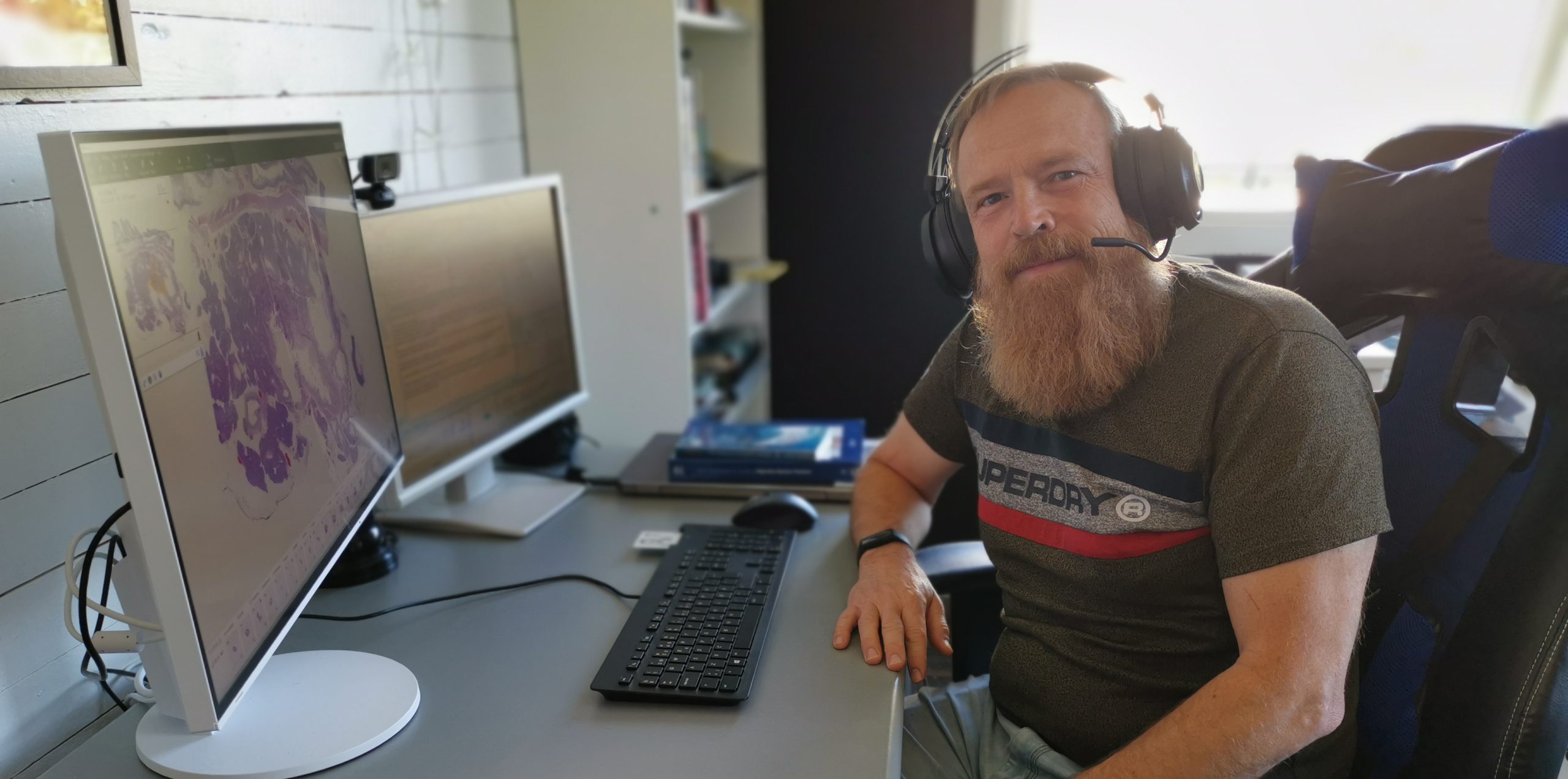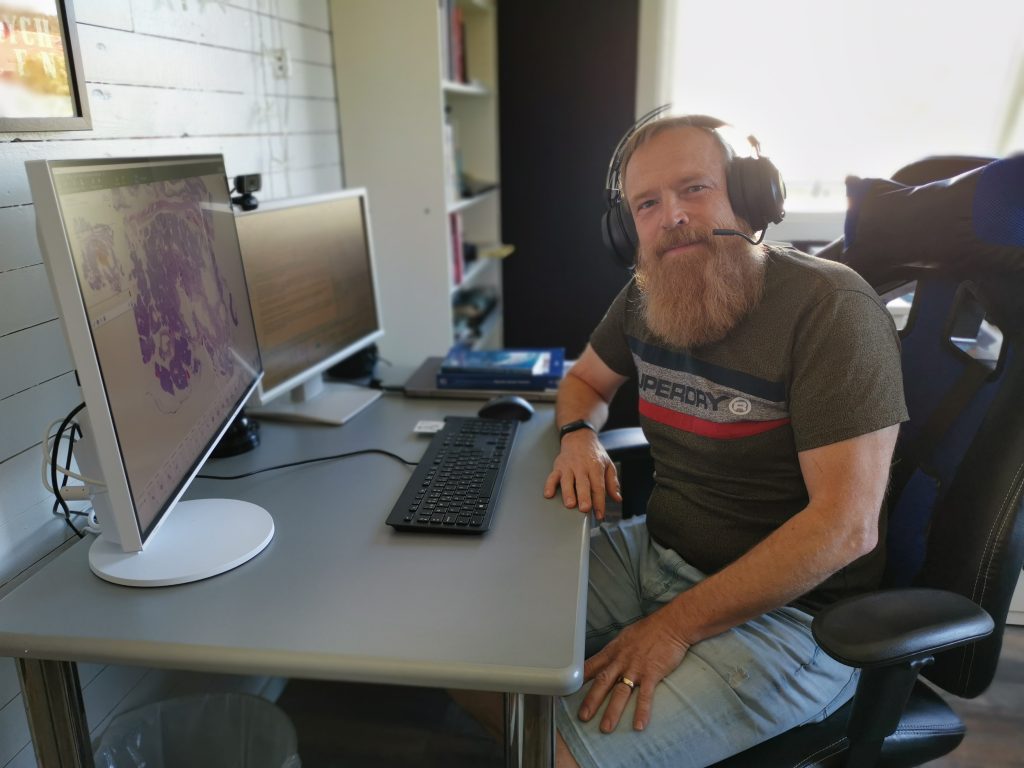Sectra: How long have you worked with digital pathology, and is your work situation different now compared with before the coronavirus outbreak?
Mats: I have worked full time with digital pathology since September 2019, which is when I started my position in Linköping. I have worked for many years in “regular” pathology, but I have always had a great interest in digital pathology. One reason for coming to Linköping is the fact that the university hospital here has been world leading in the field of digital pathology for a decade.
My work situation today looks very much like before the pandemic, except for the fact that many physical meetings are not taking place anymore. I alternate between working from Linköping and Gothenburg, where I live, and thanks to the technology I can do the majority of my job from any location.
In your opinion, what are the biggest advantages of working digitally?
I think this way of working offer a lot of possibilities; the first that comes to mind is how easy it is to access cases independent of your physical location. We used to be dependent of physical objects; the glass slides, microscope, and physical archive. Now, this is all accessible from anywhere and not tied to a specific location. Other opportunities are uncovered when you shift from looking in microscopes to performing the review on digital images. The digital images are scanned and instantly uploaded to the digital pathology system, part of a central enterprise imaging system, and can then be shared with other pathologists—it is easy to collaborate and consult each other without having to be in the same room. Furthermore, the added functionality that comes with being able to perform exact measurements as well as image analysis means a lot. As does the future perspective of AI assistance for both smarter workflow management and decision support.
To sum up, I would say digitization has made our job more fun and faster as well as more efficient and accurate. Digitization provides an opportunity to assure the quality of our work in areas where it has previously been a challenge to make objective evaluations. By working digitally and gaining access to more precise and automated tools, we have been able to increase the standardization of our evaluations. This is paramount in order to provide accurate and equal treatment of patients.
How has the coronavirus pandemic affected your department’s way of working?
One immediate change that we made was to cancel most of our physical meetings. Now we use virtual ways of communication, for example, the built-in chat function in the diagnostic workstation. Everything from department meetings to multidisciplinary team meetings (MDTs) are held virtually. Another way to communicate with my residents is through the annotation function in Sectra’s application, where you can highlight things and make notes for each other to see. Before the pandemic, it was more common to sit together and look at cases in front of a microscope. Another temporary impact of the current situation is that there is a decline in elective cases since fewer people are being called in for routine examinations and procedures.




